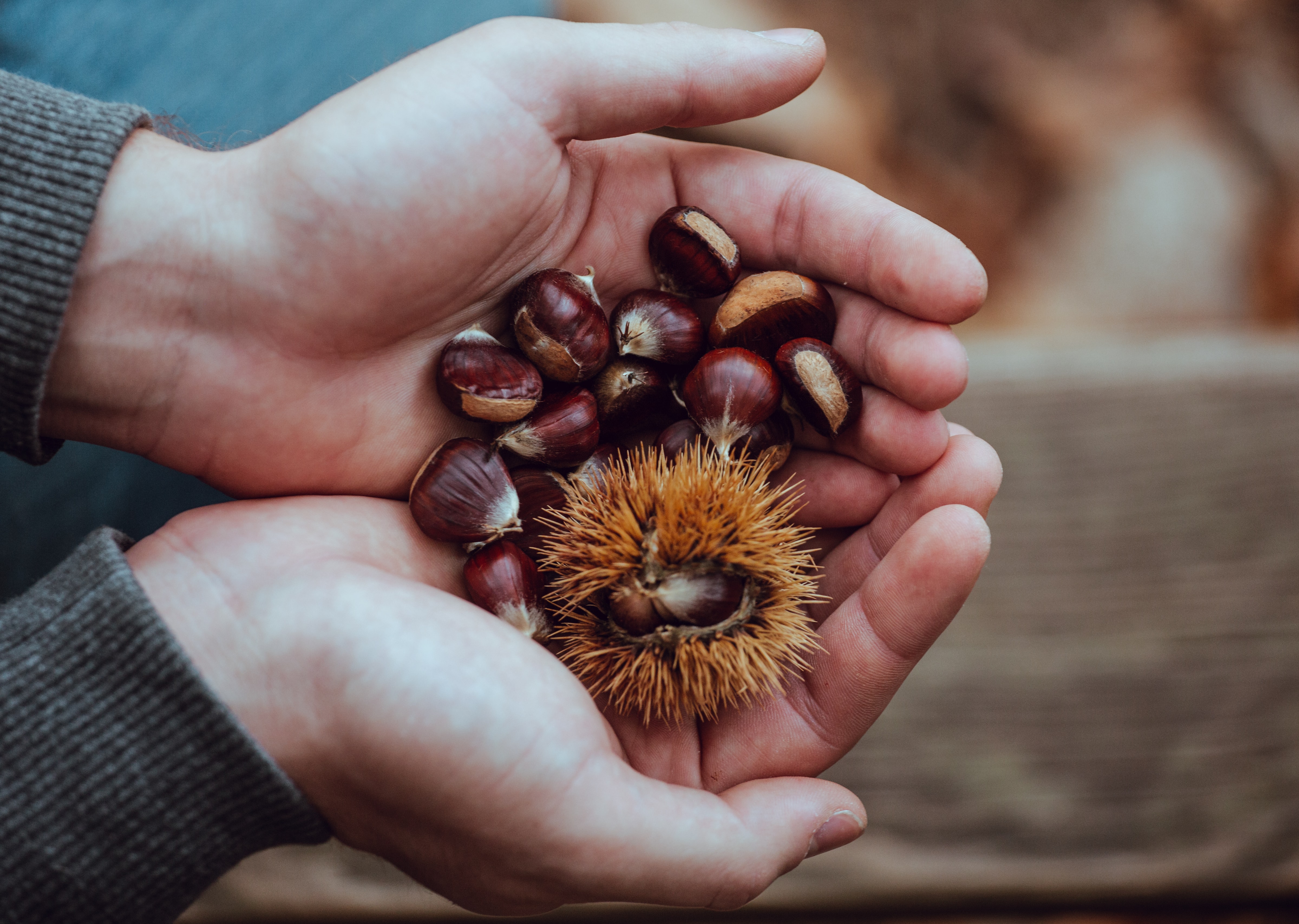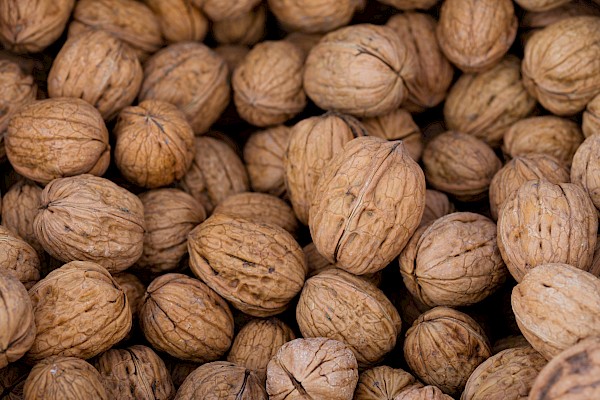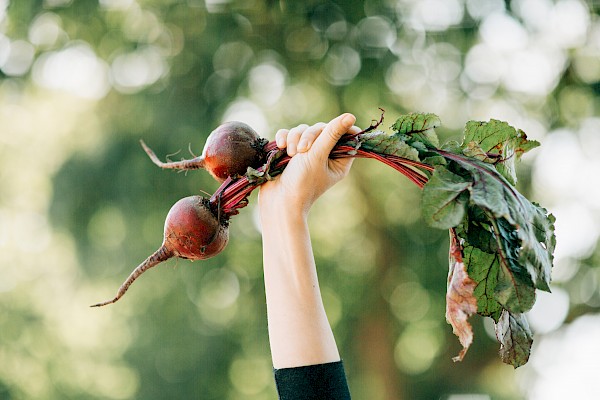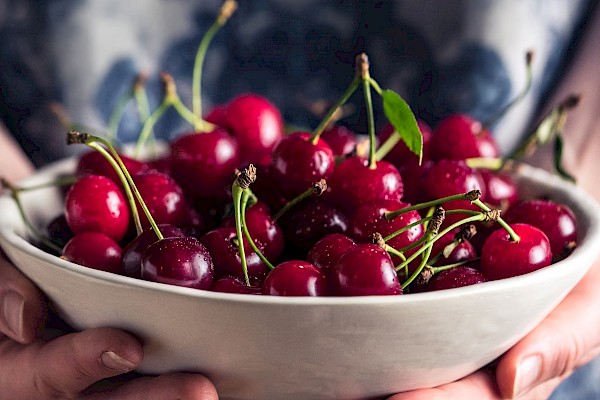Chestnuts
Autumn is chestnut season!
Can you resist the scent of roasted chestnuts? Or do you give into temptation, like almost everyone else? Here’s the good news: grabbing some chestnuts is recommended, because they are locally grown and healthy, as well as delicious!
Chestnuts contain a lot of protein and complex carbohydrates, which are responsible for making you feel full for a long time, but only a little fat. This makes chestnuts one of the best snacks for an energy boost between meals.
From “poor man’s bread” to delicacy
Did you know that the sweet or Spanish chestnut actually comes from Asia Minor and was being cultivated as early as Greek antiquity? It then spread over the Caucasus into all of Europe, and made a name for itself right here in Switzerland.
The Swiss name ‘marroni’ comes from the Italian ‘marrone’, which means ‘brown’.
Sweet chestnuts were historically ground into flour that was used to make bread. That’s why they were also known as “poor man’s bread”. Chestnuts were a staple food, particularly in regions unsuitable for cultivating cereals. From the 18th century on, the potato gradually replaced the chestnut as the main staple in Europe and as a result, chestnuts became rarer. In 1990, the demand for chestnuts started to rise again, and today they are increasingly cultivated in warmer Mediterranean countries. The largest cultivation areas are in Bolivia, China and Turkey, closely followed by Italy. There are sweet chestnut trees in Switzerland too, not just in foreign countries. Although the sweet chestnut prefers a warm climate, the trees thrive in Switzerland, and not just in the south. The largest stock of sweet chestnuts north of the Alps can be found in St Gallen Canton, or more precisely, on Lake Walen, a region with a mild climate and suitable geology, which together create good conditions for this small brown delicacy. You can find more information on the Swiss chestnut village here.
Chestnuts – seed or nut?
Chestnuts are the fruit of the sweet or Spanish chestnut tree (Castanea sativa), which belongs to the beech family, botanically speaking, and are therefore nuts. The fruits grow in a prickly husk that may contain up to three sweet chestnuts. Be careful, the sweet chestnut is very similar to the inedible horse chestnut (Aesculus hippocastanum). Sweet chestnuts are harvested in autumn, with the harvesting period extending into December.
There are three different sorts of sweet chestnut and they differ in shape and flavour. Chestnuts (Kastanien) are dark brown, round or flat on one side, with obvious segments. Marrons, or marroni, as we call them, are a cultivar of the sweet or Spanish chestnut and are generally larger, with smaller grooves, and the shape varies from heart-shaped to oval. Moreover, they are paler in colour, and have a more intense, sweeter flavour. Marrons keep for longer than chestnuts. If marrons remain longer on the tree before being harvested, they are called Dauermarroni in Swiss German, which means permanent chestnuts. They are harvested by hand in November and keep longer than any other variety.
How healthy are chestnuts?
Good news for people with allergies or food intolerances: chestnuts are gluten-free! Although they are nuts, botanically speaking, they do not contain nearly as many calories as their relatives. There are approximately 200 kilocalories in 100g chestnuts, which means that the 250g bag that you usually buy on the street corresponds to a small meal.
The round, brown nuts consist of up to 48% water, up to 40% carbohydrates, up to 8% fibre and up to 2% each of protein and fat. What’s more, they are rich in healthy nutrients such as vitamins (C, B1, B2 and niacin), trace elements and minerals (potassium, calcium, magnesium). Their high fibre density ensures good digestion.
Chestnuts – all-rounders in the kitchen
Sweet chestnuts and marrons are not suitable for eating raw. You need to cook, roast, grill or steam them before you can enjoy eating them. The starch in chestnuts becomes soluble when heated, and this renders them edible. The fruits also give off their sweet aroma when heated, because heat transforms the starch into sugar.
As already mentioned, you can cook both with whole chestnuts, and with chestnut flour, which makes a good alternative to conventional flour, particularly for people with a gluten intolerance. Slightly bitter chestnut flour can be used to make delicious pancakes or waffles. The complex carbohydrates in sweet chestnuts mean that blood sugar levels remain constant after eating them, and you feel full for longer.
How can you identify fresh chestnuts?
You can buy sweet chestnuts and marrons in Swiss markets and shops from October on. Here is the secret to putting only the freshest and best specimens into your bag: fresh sweet chestnuts feel heavy and firm, and have a shiny shell. If the shell is matt, with wormholes, don’t put that nut into your bag and don’t make any dishes with it. Do you have a bag of chestnuts at home and are no longer sure whether they are still fresh? A simple trick will help! Take a bowl, fill it with lukewarm water, and add the chestnuts. Good, fresh and palatable chestnuts will quickly sink to the bottom, while the inedible specimens will float on the surface.
Store them correctly and they will keep for longer
You should cook and eat chestnuts as quickly as possible after buying them. They will keep for about a week at room temperature and up to a month in the fridge. Have you bought too many and would like to store them for longer? No problem! Cut a cross into the shell and blanch them for approximately 15 minutes in boiling water. Then remove the shells and you can freeze them in a food bag. They will keep like this in the freezer for up to six months.
Last but not least, and as always, here is a delicious autumn recipe tip for you.
Our recipe tip
Venison ragout with chestnuts
(Ingredients for 4 people)
- 500g stewing venison
- 1 tablespoon olive oil
- 1 tablespoon flour
- 300 ml meat stock
- 1 tablespoon juniper berries
- 5 cloves
- 1 onion
- 2 carrots
- 2 palatine carrots
- 2 floury potatoes
- 300g chestnuts, peeled and cooked
Method: Heat the oil in a large pan. As soon as the oil is hot, flash-fry the meat on all sides. Then sprinkle the flour over the meat and add the meat stock. Add the cloves and juniper berries. Slice the onion into eight equal pieces. Now peel the carrots, palatine carrots and potatoes, then cut them into sticks. Then mix the vegetables and chestnuts into the meat. Cover the pan, reduce the heat and leave to stew for approximately 45 minutes. Very good with home-made spätzli. Bon appétit!
(Source)
References:
Maroni – gesunde Winterdelikatesse – available on: https://www.openscience.or.at/hungryforscienceblog/maroni-gesunde-winterdelikatesse/
Sohmer, V. (2021). Superfood Marroni – lecker & gesund. Blog CSS Versicherung. Available on: https://www.css.ch/de/privatkunden/meine-gesundheit/ernaehrung/ernaehrungswissen/superfood/superfood-marroni.html
Wani T.A., Wani I.A., Rayees R., & Masoodi F.A. (2020) Sweet Chestnut. In: Nayik G.A., Gull A. (Eds.). Antioxidants in Vegetables and Nuts – Properties and Health Benefits. Springer, Singapore.
 subscribe to newsletter
subscribe to newsletter


